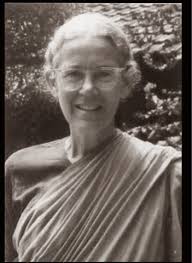 In 1887, Amy Carmichael heard the founder of China Inland Mission (Hudson Taylor) speak, and her life was never the same. Born in 1867, the oldest of seven, she grew up in privilege. Her father, a mill owner, provided a comfortable living, and she spent much of her childhood gleefully riding her pony along the shores of Northern Ireland. Her family attended the Presbyterian church where she received Bible training, but it was an encounter with a poor elderly woman that caused Amy to consider her Christian walk. As she stopped after church to help the woman with a heavy bundle, the Holy Spirit reminded her, “Every man’s work shall be made manifest…it shall be revealed by fire…” (1 Corinthians 3:13). Gold, silver, and precious stones or wood, hay, and stubble—was she building that which would last for all eternity? This question haunted her. She spent the rest of the day alone with God, and when she emerged, her life had a new purpose.
In 1887, Amy Carmichael heard the founder of China Inland Mission (Hudson Taylor) speak, and her life was never the same. Born in 1867, the oldest of seven, she grew up in privilege. Her father, a mill owner, provided a comfortable living, and she spent much of her childhood gleefully riding her pony along the shores of Northern Ireland. Her family attended the Presbyterian church where she received Bible training, but it was an encounter with a poor elderly woman that caused Amy to consider her Christian walk. As she stopped after church to help the woman with a heavy bundle, the Holy Spirit reminded her, “Every man’s work shall be made manifest…it shall be revealed by fire…” (1 Corinthians 3:13). Gold, silver, and precious stones or wood, hay, and stubble—was she building that which would last for all eternity? This question haunted her. She spent the rest of the day alone with God, and when she emerged, her life had a new purpose.
In 1885, her father died, and their financial situation changed drastically. Her family lost their mill, and she had to work to help support her younger siblings. At her place of employment, she began ministering to “shawlies,” girls who wore shawls on their heads as they were too poor to afford the hats worn by women of the day. She was ridiculed by her friends and her church for stooping to these “common people.” But this is one of the characteristics that marked Amy Carmichael; people were classless in her eyes. She only saw their needs, both the physical needs and the needs of their hearts. She set up temporary buildings where she held fellowship meetings, aiding poor factory workers and teaching them the Word of God. God was laying the groundwork for the future He had for her.
In 1892, Amy heard God’s call to carry her burden across the sea. She initially applied to minister with China Inland Mission, but she was rejected due to her frailty. Wealthy, powerful friends sponsored her, and after short-term trips to China and Japan, at the age of twenty-eight, she found herself in India. Health problems resulted in severe migraines causing temporary blindness and weeks in bed. “Am I too frail for this work?” she asked herself. But certain of God’s call on her life, she persevered and eventually established one of the most well-known Christian missionary works, the Dohnavur Fellowship.
Upon arrival in India, Amy initially participated in a women’s traveling evangelistic team, but as she became more familiar with India and its Hindu culture, she came to an alarming realization. Very young girls were given or sold to the Hindu temples and made to serve and entertain male Hindu worshipers. These temple prostitutes were mistreated and often thrown into the street once pregnant. Amy took them in, clothed and fed them, and introduced them to the Bread of Life. Influenced by her spiritual mentor, Hudson Taylor, one special distinctive of her ministry was that she wore Indian clothes and required the same of all who served with her. They ate Indian food and used Indian furnishings. It was important to her, just as it had been to Hudson Taylor, to live as the people and not impose her European culture on them. Her missionary service to the people of India lasted over fifty-five years with no furlough ever taken. 
A spirit of service and a love for those who others considered “unlovable” always dominated Amy’s ministry. In 1931, she suffered a severe fall that crippled her and kept her bedridden for twenty years. During that time, she wrote and published over thirty-five books. She remained bedridden until her death at the age of eighty-three. When friends buried her in her beloved India, they honored her request that no marker be put on her grave. In her writings, she penned the poignant truth that above all, mission work offers one thing and one thing only—a chance to die.